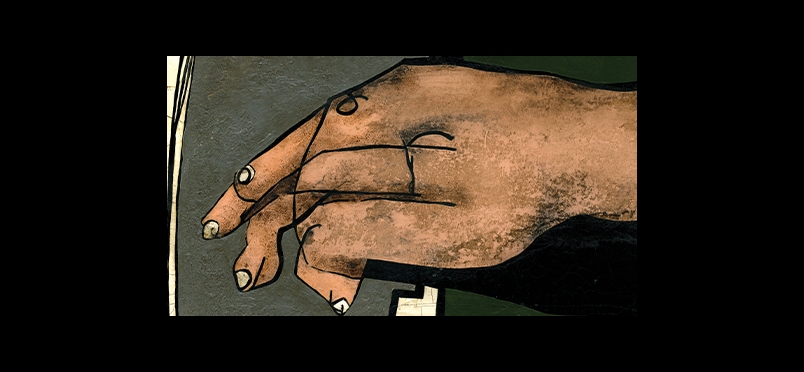| arthritis
NOT a John Grisham Novel, but a Novel Wrist Surgery

The Scapholunate Ligament
Newswise — Over the past three decades, hand surgeon Scott Wolfe has been conducting research to find a better way to repair a common wrist injury that results in pain, disability and progressive arthritis. Now a new surgical procedure to repair a torn scapholunate ligament shows promise in relieving wrist pain and restoring function, according to Dr. Wolfe, Chief Emeritus of the Hand and Upper Extremity Service at Hospital for Special Surgery (HSS). He believes it may also prevent the arthritis that many people with the injury develop over time.
The scapholunate is a critical ligament that connects and stabilizes the scaphoid and lunate, two small bones near the center of the wrist. When an injury, often a fall on an outstretched hand, causes the ligament to rupture, patients can experience pain, lose grip strength and develop arthritis that gets worse as time goes on.
“When the ligament tears, the scaphoid and lunate bones will separate, start to rotate and degenerate. Some patients can feel the scaphoid popping in and out of its normal position,” Dr. Wolfe explains. Without treatment to repair the torn ligament, people ultimately develop a condition known as SLAC wrist. SLAC, which stands for “scapholunate advanced collapse,” is the most common form of post-traumatic arthritis in the wrist, affecting about four million people. As the bones rub abnormally against each other, their protective cartilage wears away.
“The injury most often affects healthy active people. When the ligament ruptures, any activity that combines wrist motion and wrist strength becomes difficult, if not impossible,” Dr. Wolfe says. “Affected patients report problems performing jobs that require manual work. They can no longer play sports such as golf or tennis, do yoga or Pilates, or work out with weights at the gym.”
Until now, surgery to reconstruct a torn scapholunate ligament has not been ideal, Dr. Wolfe says. The most common repair, which entails the use of metal wires and pins, fails in about 30 percent of patients.
In searching for a better treatment, Dr. Wolfe and his research team studied what happens in the wrist after the ligament tears in his laboratory. Once they identified the mechanism and involved ligaments, they presented and published their research in international forums and medical journals. Dr. Wolfe and his associates have received awards for their work. At the same time, Dr. Michael Sandow, a colleague of Dr. Wolfe’s in Australia, developed a 3-D computer model to study the way the wrist bones move and identify the injury mechanism from a different perspective. Dr. Sandow arrived at the same conclusion and developed a novel technique to address all components of the injury. He published a paper documenting the surgery and outcomes in 10 patients at two years following surgery in the European Journal of Hand Surgery.
Dr. Wolfe describes the surgery as a complex and highly technical procedure. “The critical ligaments in the front and the back of the wrist are reconstructed by using a portion of one of the tendons in the patient’s wrist, combined with a synthetic tape that’s 10 times stronger than steel, weight for weight. The tape is very strong, but also very lightweight and very thin,” he says. “The patient’s own tendon and this synthetic material are woven through the bones in such a way that the scapholunate ligament, as well as two other nearby ligaments, are repaired all at once. This brings the bones back into the proper position and stabilizes them, so abnormal movement is stopped.”
The new procedure is performed without the use of wires and pins, a major advantage, he says, as metal hardware in the wrist can loosen, become infected, fail and necessitate another surgery.
Dr. Wolfe has performed the ANAFAB procedure on 14 patients to date and is monitoring their progress. So far, so good. Fifty-eight-year-old Peter Shrair, a business/commercial real estate attorney from Longmeadow, Massachusetts, is doing well after having the surgery. He has sent Dr. Wolfe videos of himself doing pull-ups in the gym.
Read the full press release on Newswise.
Other Categories:
Did you enjoy this article?
Subscribe to the PAINWeek Newsletter
and get our latest articles and more direct to your inbox
